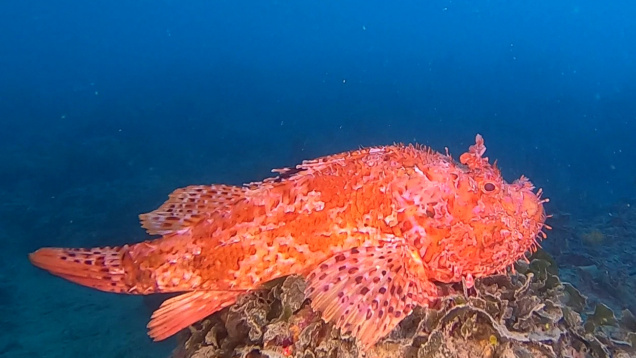Red scorpionfish
In this beautiful dive we met many specimens of Red scorpionfish, Scorpaena scrofa, and these that we see in the video are particularly large, almost a meter long. This species is typical of the Mediterranean Sea and we have met them at a depth of 52/53 meters in what would be their ideal habitat, i.e. the typical coralline seabed full of holes and ravines where Gorgonians and sponges thrive on which they settle perch waiting to launch some ambush to fish like the red damselfish.








